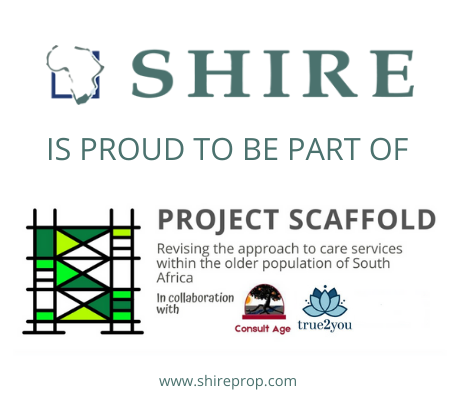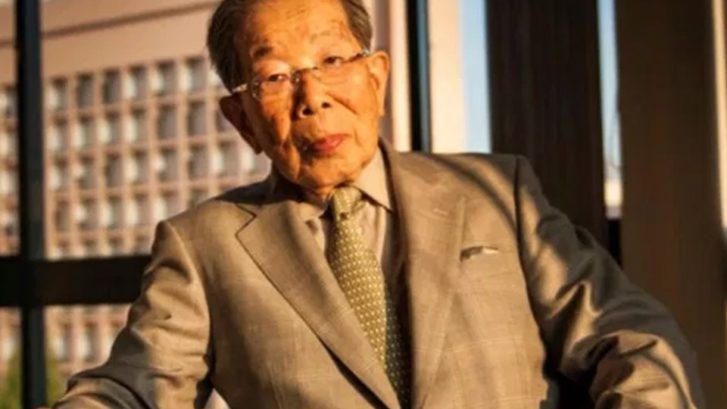This article first appeared in Personal Finance Magazine : 2nd Quarter 2019
“What the retirement default regulations mean for you
Despite contributing to a retirement fund throughout their working lives, many members don’t retire financially secure. The so-called default regulations are designed to improve this situation, by creating a safety net for members both while they are saving and when they have to choose a pension. Mark Bechard looks at how the regulations will affect you.
They take fewer than seven pages in the Government Gazette, but the “retirement default regulations” have been hailed as heralding the most significant change to South Africa’s retirement landscape since the shift from defined-benefit (DB) to defined-contribution (DC) funds in the 1990s.
The regulations, which were issued in terms of the Pension Funds Act, were implemented on September 1, 2017, and all funds that fall within their ambit had to comply with them by March 1 this year.
The regulations require retirement funds to adopt a set of default options when it comes to how members’ savings are invested before retirement and what happens to their savings if they leave their employer’s service before retirement, and to offer members a pension at retirement.
Let’s look at each of these three legs to the regulations, and how they may affect you, the fund member.
Default investment portfolio/s
Regulation 37 requires all DC retirement funds to establish at least one default investment portfolio in which your contributions must be invested if you have not selected another portfolio – assuming that the fund does offer members a choice of portfolios.
The default portfolio requirement does not apply to DB funds, retirement annuity (RA) funds, preservation funds and DC funds in voluntary liquidation.
The composition of a default investment portfolio may differ from member to member, depending on the age or likely retirement date of each member, the value of a member’s retirement savings, a member’s actual or expected contributions, or any other factor that the trustees consider to be appropriate.
David Gluckman, the head of special projects at Sanlam Employee Benefits, says it might be better if regulation 37 referred to a default investment “strategy”, rather than “portfolio”, because it’s clear from the wording that the default “portfolio” can consist of a number of underlying portfolios suitable for a specific category of member – in other words, life-stage investment models. Offering a pre-selected life-stage investment portfolio – where the investment strategy takes into account your age and years to retirement – is common among DC funds, so, if your contributions are already invested in such a portfolio, regulation 37 will not immediately affect you – provided that whatever default portfolio your fund offered before March 1 now conforms to the requirements set out in the regulation.
A survey by Sanlam in 2018 on the default regulations found that the overwhelming majority of members invest in their fund’s default portfolio, so it’s important that this strategy provides members with the best-possible outcome at retirement.
“The valuable aspect of this regulation is that the default will receive more focused attention, and this will hopefully lead to better-quality solutions being developed to provide better long-term returns, net of fees, which would translate into better accumulation of assets by members,” says Andrew Davison, the head of advice at Old Mutual Corporate Consultants.
To this end, trustees must be able to demonstrate that the default portfolio is “appropriate” for the category of member whose savings are invested in it. Among other things, trustees need to take into account the portfolio’s investment objective, asset allocation, fees and charges, and the expected risks and returns. Trustees must monitor the default portfolios “regularly” to ensure they comply with the principles set out in regulation 37.
Fees and charges for default portfolios must be “reasonable and competitive”. Default portfolios’ service providers cannot offer loyalty bonuses or have “complex fee structures” – in other words, members cannot be charged fees or awarded bonuses based on factors such as their length of membership and the number of contributions they make.
Controversially, default portfolios can invest in products that charge performance fees, although National Treasury says these fees will be subject to a standard drawn up by the Financial Sector Conduct Authority (FSCA). The argument against including products with performance fees is that neither trustees nor members really understand how these fees work, and that performance fees provide large rewards for asset managers that outperform their own benchmarks – for which they already charge an annual management fee – without penalising them when they under-perform. The counter-argument is that a prohibition on performance fees could overly restrict funds’ ability to access some asset classes and products.
Gluckman says a proper disclosure standard for performance fees is better than an outright ban. Davison says the regulation places an onus on trustees who include products that charge performance fees to ensure they understand these fees better and obtain expert advice before agreeing to them. He believes that well-designed performance fees can be an effective way of paying for returns, and provide a fair outcome for both the investor and the asset manager.
Members may benefit from the regulation’s requirement that trustees “consider” passive investment strategies when designing default portfolios, because passive investments generally charge lower fees than actively managed investments. However, default investment portfolios do not have to include either active or passive strategies, or a combination of both.
“The important requirement is that the trustees need to be able to demonstrate that they have considered all of the options, with specific reference to passive solutions. Trustees will need to be clear what justification they have for selecting a higher-cost (active) solution and the reasons they expect it to deliver superior returns, or at least superior risk-adjusted returns, after fees,” says Davison.
He says one of the main benefits of regulation 37 for members is that it places an emphasis on funds’ communication with them, which will help members to make informed choices. In this respect, trustees must “adequately” communicate to members the default portfolio’s asset composition and performance, and all fees and charges must be “appropriately disclosed” to members in “clear and understandable language” and “in formats which may be prescribed”.
The regulations do not state explicitly that funds must disclose to members how fees and charges for default portfolios affect their savings. However, Davison says it is likely that the prescribed format will be the Association for Savings and Investment South Africa’s Retirement Savings Cost Disclosure, which does require funds to disclose how fees impact on savings over different periods.
Members cannot be “locked into” the default portfolio. At least once a year, they can instruct the fund to transfer their savings from the default portfolio to any other portfolio. Funds are allowed to charge a “reasonable” administrative fee for effecting this transfer.
Default preservation
Members sabotage their prospects of a financially secure retirement when they withdraw their retirement benefit as cash when they resign – and spend it. Members sometimes do this because they do not understand the full implications of cashing out their savings. In many cases, members simply don’t know what their options are, and they don’t know where to start.
Regulation 38 aims to encourage you to preserve your retirement savings, by making paid-up membership the automatic result if you leave your employer’s service before your normal retirement date, as determined by the rules of your fund. Paid-up membership means your savings are retained within the fund but you cease making contributions.
You now have four options with regard to what to do with your retirement benefit when you resign: take it as cash, transfer it to another retirement fund, transfer it to a retail preservation fund, or keep it in your employer’s fund. The major change is that the last option is now the default, unless you instruct the fund in writing that you want to withdraw your benefit as cash, or transfer it to a preservation fund or the fund of your new employer. This provides you with an easy-to-access, cost-effective way of leaving your savings to grow until you reach retirement. Second, if you decide to withdraw your savings in cash or transfer them to a preservation fund or the fund of your new employer, you must be “given access to” retirement benefits counselling.
If you decide to transfer your benefit to another fund, this transfer must be effected free of charge.
Regulation 38 applies only to DC pension and provident funds where fund membership is a condition of service. In terms of an exemption from the regulation granted by the FSCA, DB funds do not have to convert a departing member’s savings to a DC benefit so that the member can preserve it as such. DB funds may give you this option – it depends on the rules of the fund.
Many funds’ rules have not allowed paid-up membership, or accepted transfers from other funds, particularly if the amount to be transferred was less than a certain minimum. The regulation has overridden such rules, and this will place an administrative burden on funds. Davison says it is onerous to keep in contact with members who have left an employer’s service years, or even decades, ago. Gluckman says that, in Sanlam’s experience, it costs more to service paid-up members than active (contributing) members, because the fund doesn’t have assistance from an employer’s human resources department. But the change will be to the advantage of members who want to preserve their savings. If you couldn’t retain your benefit in your former’s employer’s fund or transfer it to the fund of your new employer, you had no choice but to move your savings to a retail preservation fund, which, in general, charges higher fees than an institutional retirement fund, and exposes you to the risk of poor advice. Alternatively, a lump-sum payout would be hit by the punitive, pre-retirement withdrawal tax rates.
Regulation 38 makes it clear that, when it comes to fees and charges, paid-up members should not be at a significant disadvantage relative to active members. You may not be charged an initial once-off fee if you decide to become a paid-up member, and active and paid-up members must be charged the same investment fees. Funds can charge active and paid-up members different administration fees, but the fees for paid-up members must be “fair and reasonable” and “commensurate with the cost of providing the administration service to members still in the service of the participating employer”.
The FSCA’s guidance notice on the regulations states that, normally, the administration fees for paid-up members should be lower than those for active members, because funds do not have to administer monthly contributions and payment schedules. The notice says funds must implement an administration system that ensures the benefits of paid-up members – particularly those with small benefit amounts – are not eroded over time by fund expenses.
Whether funds will agree that it costs less to service paid-up members than active members is open to question, particularly in light of the new administrative requirements. Within two calendar months of a fund becoming aware that you have left the service of your employer, the fund must provide you with a paid-up membership certificate. And within four months of your joining your new employer’s fund, the fund must ask you whether you want to transfer your savings into the fund.
Default pension (annuity)
Arguably, the most significant change is the introduction of what are often referred to as “default annuities” for retirees, although this term is misleading, because your retirement savings will be invested in such a product at retirement only if you elect this option instead of buying a pension on the retail market, as was the case before March 1. Sanlam says a better term is a trustee-endorsed annuity strategy.
All pension funds, pension preservation funds and RAs must establish an annuity strategy. Provident and provident preservation funds must establish an annuity strategy only if the fund’s rules allow the members to choose an annuity.
National Treasury’s rationale for introducing annuity strategies is that, at retirement, most fund members have to select a pension from among the myriad of products on the market, without support and advice, and carrying all the risks of a poor decision and high costs. Retirement fund trustees, on the other hand, have access to consultants and advisers and can use their fund’s purchasing power to negotiate lower fees.
With this is mind, regulation 39 requires trustees to establish annuities that are “appropriate and suitable” for the classes of members who will choose them. In this regard, trustees must consider the level of income that will be paid to retired members; the investment, inflation and other risks inherent in that income; and the level of income protection granted to beneficiaries when the member dies.
All fund members, whether or not they choose a trustee-endorsed annuity, must be given access to retirement benefits counselling at least three months before reaching retirement age.
Trustee-endorsed annuities must have “reasonable and competitive fees and charges” for asset management and administration. These charges, and their impact on members’ benefits, must be “appropriately” disclosed to members, in “clear and understandable” language, and “in formats which may be prescribed”.
Trustees have to review their annuity strategy at least once a year, to ensure that the annuity, or annuities, on offer still comply with the regulations and are “appropriate” for members.
It is important to note that these requirements apply only to trustee-endorsed annuities, and that you do not have to opt for one of these products at retirement.
Trustee-endorsed annuities can be a life (guaranteed) annuity or a living annuity, or both – regulation 39 does not prescribe the type or number of annuities that must be provided. Trustees can decide whether to provide these annuities “in-fund” and/or “out-of-fund”.
With an in-fund annuity, your capital is retained within the fund, and the fund pays you a monthly pension. The trustees are responsible for deciding how to invest fund’s assets and must ensure the fund can cover its liability towards you.
Some funds, particularly those with a relatively small pool of reserves, may decide to back up their obligation to pay pensions by taking out an insurance policy with a life assurer. The fund does this by taking out a policy in the name of the fund. The assurer has an obligation to the fund, not to the individual members, but the fund still has an obligation to its members to honour the annuity payments. It collects the pensions from the assurer and passes them on to the pensioners. Although regulation 39 speaks of fund-owned policies as applying to life and living annuities, in practice such a policy can only cover a life annuity.
With trustee-endorsed out-of-fund annuities, your benefit is transferred from the fund to a life assurer (in the case of a life annuity) or another type of financial services company (living annuity). The fund has no obligation to honour the annuity payments. The trustees’ liability is limited to choosing an annuity that meets the criteria set out in regulation 39.
If you choose a living annuity, whether in-fund or out-of-fund, the trustees must inform you “regularly” and in “clear and understandable language” of the composition of underlying assets, how they are performing, and how this will affect your income.
You will have to think carefully about the implications of opting for a trustee-endorsed living annuity (with specific considerations relating to whether it is in-fund or out-of-fund), or “going it alone” and making your own choice from the plethora of products on the market. The route you take will have implications both during your retirement and when you pass on any remaining capital to your heirs:
- If you opt for an in-fund living annuity, the trustees must monitor the sustainability of your income and alert you if your drawdown rates are “deemed not to be sustainable”. This requirement does not apply if you opt for an out-of-fund annuity, or choose one independently.
- In-fund and out-of-fund living annuities can offer a maximum of four underlying investment portfolios, although the FSCA points out in its guidance notice that it could be only one portfolio. This means that a trustee-endorsed living annuity may offer you less investment choice than you would enjoy if you sourced your own living annuity.
- In addition to the requirements for default investment portfolios set out in regulation 37, trustee-endorsed living annuities – both in-fund and out-of-fund – must comply with the asset allocation limits in regulation 28. Among other things, regulation 28 limits the portfolio’s exposure to equities to 75% and caps the offshore exposure at 30%.
- The drawdown rates for trustee-endorsed living annuities must comply with a prescribed standard. In November last year, the FSCA published a draft conduct standard for trustee-endorsed living annuities that included maximum drawdown rates. These rates started at 4.5% a year for men and 4% a year for women aged 55, rising to 8% for men and 7% for women aged 85. These proposed rates are far below the maximum drawdown rate of 17.5% a year that applies to non-trustee-endorsed living annuities. In fact, because trustees are required to ensure the sustainability of your income in retirement, they could apply even lower rates. The draft standard was due to take effect on March 1, but the FSCA has suspended its implementation following feedback from the retirement industry. Although it remains to be seen what maximum drawdown rates will apply to trustee-endorsed living annuities, it is likely that they will be lower than those that living annuitants can currently choose.
- Section 37C of the Pension Funds Act applies to any remaining capital in an in-fund living annuity when you die. This means that the fund’s trustees have the final say with regard to how your capital is distributed. With an out-of-fund annuity, or one of your own choosing, the capital is distributed according to your wishes set out in the beneficiary nomination form. Gluckman says it is likely that section 37C will be amended to exempt in-fund living annuities.
- The greater flexibility and choice that comes with opting for a non-trustee-endorsed living annuity has to be weighed against the benefits of an in-fund annuity. Johan Gouws, the head of institutional consulting at Sasfin Wealth, says your fund’s investment strategy should allow you to remain in the portfolios in which you were invested before retirement. “This will allow members to experience a seamless transfer from pre- to post-retirement, as they will not have to fundamentally change their portfolios, or select new investment strategies.” He says the institutional pricing available to in-fund annuities should also result in you paying lower fees. “Members will also be able to avoid any market timing risk, as the fund will be able to do a unit transfer of their investment portfolio to the fund’s default living annuity without having to sell out of the market and then re-enter it.”
“APPROPRIATE”, “SUITABLE”, “REASONABLE” …
The regulations require trustees to choose “appropriate” or “suitable” investment portfolios and annuity strategies; to ensure that fees are “reasonable” and “competitive”; that there is “adequate” communication with members. How will trustees know whether they are fulfilling their obligations? More importantly, how will you, the member, know whether your trustees are adhering to these requirements?
Trustees will have to turn to consultants and advisers when designing investment portfolios and annuity strategies, and use fund administrators to service and communicate with members. But the regulations make it clear that the trustees are ultimately responsible for ensuring that their funds comply with the regulations.
Jan van der Merwe, the head of actuarial and product at PSG Wealth, says South Africa’s financial services legislation is moving towards a principles-based approach, which means that terms such as “appropriate” and “reasonably priced” will not be defined. Trustees will need to be able to prove to the regulator that they “shopped around” and did their research on products, services and costs.
Davison says for trustees to justify that they are adhering to the regulations they must be able to document and demonstrate that they have applied their minds and considered all of the options before selecting solutions or service providers. “Clear, objective comparisons will need to be documented as part of the process.”
He says the key tenet of the regulations is that trustees do have better access to consultants and advisers and are in a better position to negotiate fees and charges for the benefit of members.
“Initially, there is a steep learning curve for most trustees, as they have never had to deal with the post-retirement phase before, so they need to up-skill on annuities and similar solutions.”
RETIREMENT BENEFITS COUNSELLING
Fund members are faced with making crucial decisions that will affect their long-term financial well-being when they leave their employer before retirement, or when they have to choose a pension when they reach retirement. Lacking sufficient or accurate information, many members do not make the right decisions. To overcome this problem, the regulations require members to “be given access to retirement benefits counselling” before they can withdraw their retirement savings or transfer them to another fund, and at least three months before they reach normal retirement age.
The regulations and the FSCA in its guidance notice make it clear that retirement benefits counselling is not financial advice – and this must be pointed out to you. Counselling is the disclosure, in “clear and understandable language, of the risks, costs and charges of the fund’s investment portfolios, the fund’s annuity strategy, how the fund handles preserved benefits, “and any other options available to members”.
Although all members must receive counselling when they reach retirement, counselling is limited to providing information about trustee-endorsed annuities.
If you are provided with financial advice in conjunction with counselling, the person providing the advice must be a registered adviser, or if you are provided with tax advice, the person must be a registered tax practitioner.
The FSCA says the person providing counselling does not have to be a registered financial services provider or a financial adviser. However, the fund must be satisfied that the person providing the counselling is “suitably qualified” and “able to manage any conflicts of interest”.
Counselling can be provided in person or in writing, but in either case funds must keep a record of the counselling provided to each member.
It is universally agreed among industry commentators that counselling may not be sufficient to meet the needs of all members, particularly when they reach retirement. If your assets include your own retirement savings apart from those in your employer’s fund, discretionary and offshore investments, or if you have complex estate planning requirements, you need to obtain advice from a financial planner, to ensure you are in a position to make an informed decision.”
To read more about Shire Retirement Properties (Pty) Ltd, click here.














